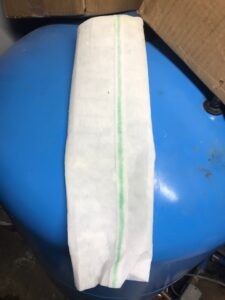Cows
General Cow Care and Practices
- Average body temperature: 100.5 F
- Age of sexual maturity: 6 months
- Heat cycle: 21 days
- Gestation: 283 days (9 months)
- Productive life: 10-12 years
- Digestive system: Ruminant
- Dairy: Cattle selectively bred to produce larger volumes of milk than their calves would consume.
- Beef: Cattle selectively bred to be heavily muscled, often with a lighter bone structure and faster growth curves than other breeds.
- Exotic: Cattle more closely aligned with their wild counterparts, such as water buffalo or American bison.
- Calf: Birth to weaning.
- Weanling: Average age of weaning is 4-6 months.
- Heifer: Refers to a young, female cow of sexual maturity, but not yet milking. It is not recommended to breed heifers before 18 months of age because their bodies have not fully matured.
- Cow: Refers to female breeding-age bovine which have gone through their first lactation cycle.
- Bull: Any individual of the species that exhibits male characteristics.
- Steer and oxen: Castrated males.
- Free martin: Any individual of the species that exhibits outward female characteristics, but does not have a complete reproductive tract and is therefore unable to reproduce.
Provide adequate nutrition (pasture, high-quality forage or grains) to brood ewes during the last third of gestation and until their lambs are weaned. Allow ewes adequate space to move about freely during pregnancy. Check ewes regularly before, during and after lambing.
Some livestock managers choose to identify lambs with ear tags or tattoos at birth or soon after.
When managing the living conditions of your organic cattle, you must consider the following: “All livestock … must have year-round access to outdoor areas that provide shade, shelter, opportunity for exercise, fresh air, clean water for drinking, and direct sunlight” (MOFGA Certification Services 2021, 23).
You have to consider the cow’s anatomy and physiology in relation to their living conditions.
- Ambient temperature and airflow are important things to monitor when dealing with ruminants. The action of the rumen creates heat, much like a compost pile, and it is more important to make sure adult cattle are not overheating. The optimum environmental temperature for peak production in adult dairy cattle is between 25 F and 65 F.
- It is the natural inclination of cattle to lie down. This means they need both comfortable, well-bedded space to lay down and enough space to get back on their feet.
- Due to the size of the rumen, diet and demands created by milk production, adult cattle consume upwards of 30-plus gallons of water per day. Cows need a constant supply of water because of this.
While formulating a ration can be as simple or as complicated as a producer makes it, cattle should always have access to minerals in accordance with their life stage and production level.
Generally, cattle receiving adequate nutrition and housing remain healthy and problem-free. There are, however, some common issues that arise despite the best of care. If cattle owners remain aware of these possibilities, they are more prepared to work with their veterinarian to put their animals on the road to recovery.
We also have a full list of best cattle practices for all you need to know about raising cattle.
More Cow Resources

Milk as a Medium: Considerations for Raw Milk Production
By Jacki Perkins The history of dairy consumption dates back nearly 5,000 years. Milk pasteurization has existed since 1862 and has become mainstream right along with the push for urbanization and the loss of agrarian lifestyles. One can find studies and articles arguing both sides of the pasteurization debate. What I would like to highlight
A Total Immersion Dairy Farm Apprenticeship at Wolfes Neck Center
Left to right: Matt DeGrandpre (farm operations manager), Tierney Lawler (apprentice), Caitlin Morgan (apprentice), Big Cow, Haden Gooch (graduate apprentice, current journeyperson) and Corinne Carey (apprentice). Cows head out to pasture at Wolfe’s Neck Center. Wolfe’s Neck Center hosts about 50,000 visitors per year. Entrance to the milking parlor. By Sonja Heyck-Merlin Wolfe’s Neck Center for Agriculture
Manos o Machina
Toki Oshima illustration The decision to switch from hand to machine milking By Jacki M. Perkins Recently a question on a listserv for beginning farmers piqued my interest. When and why have any of you switched from hand milking to a machine?” Having grown up milking cows commercially, been formally educated in dairying, then switching
The Sweet Spot
Drawing by Toki Oshima By Jacki Martinez Perkins The dairy industry has found itself in the same position that many small businesses encountered during the past few decades. Small farms are being driven out of business by the natural progression of capitalism. Large-scale dairies can operate at lower costs per cow, negotiate their price points and own
Maine AgrAbility Addresses Cheese Making at Appleton Creamery
Nearly every cheesemaking task requires strong hands and shoulders. The work surface height is important for musculoskeletal health. Alternate standing with sitting on a stool to reduce leg fatigue and lower back stress. The important thing is to be able to work without stooping. Larger handles protect finger joints and cartilage from stress. A fireman’s
The Once and Future Cow
Toki Oshima drawing By Joann S. Grohman Maine has the highest rate of new farmers in the 48 states; we’ve gained 1,000 just in the past 10 years. Many of these new farmers will, I hope, consider keeping one or several cows, as nearly everyone did until less than 100 years ago. Even in towns,
Cow Videos

16:51

1:26:47

2:36

0:46

4:03
Ask an Organic Specialist
Ask Jacki Martinez Perkins questions about organic dairy/livestock management production and certification requirements.
